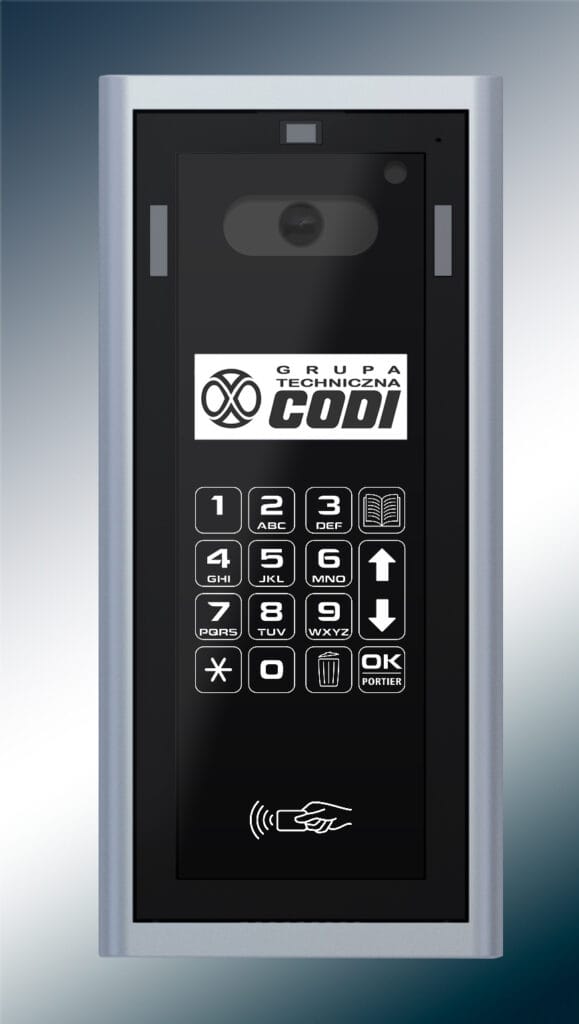The COVID-19 pandemic has reshaped how we perceive the safety of contact with everyday devices. ATMs, intercoms, access keypads — all these elements of urban and building infrastructure, though essential, pose a potential risk of spreading microorganisms. Against this backdrop emerged the project "Elimination of Hazard Sources. Safety of Touch Panels and Keyboards", aimed at developing a solution that eliminates the need for manual disinfection.
Revolutionary Cold Plasma Technology
At the heart of the project lies a novel technology: self-disinfecting surfaces activated by cold plasma. This innovation integrates two seemingly conflicting functions — capacitive touch keyboard functionality and a dielectric barrier discharge (DBD) plasma generator. The user interacts with the panel as they would with any standard touch interface; however, once the interaction ends, an automatic disinfection cycle is initiated.
How It Works
During the disinfection process, a layer of atmospheric cold plasma forms on the surface, generating reactive oxygen and nitrogen species that effectively destroy bacteria, viruses, and fungal spores — without leaving chemical residues or damaging the surface.
Technical Implementation and Design
The design employs a multilayer metal-ceramic composite (LTCC), enabling the generation of an electric field of several tens of kV/cm, without the risk of electrical breakdown or shock. A key challenge was to develop an electrode and dielectric system capable of operating in both touch and plasma modes.
For this purpose, a programmable high-voltage power supply with leakage and breakdown detection was designed, which cuts off voltage within fractions of a second in case of anomalies — ensuring full user safety.
Key Technical Features
- Electric Field Strength: Several tens of kV/cm
- Safety Response Time: Fractions of a second
- Material: Multilayer metal-ceramic composite (LTCC)
- Dual Functionality: Touch sensing + plasma generation
Rigorous Testing and Validation
The project team conducted extensive laboratory tests, including:
Puncture Resistance Testing
Up to 150% of Umax to ensure durability
Current Leakage Analysis
Under simulated grounding failure conditions
Microscopic Crater Analysis
After controlled dielectric damage
Environmental Testing
Variable weather conditions and vandalism resistance
These rigorous tests were crucial in verifying whether the design could withstand mechanical damage, variable weather conditions, and acts of vandalism typical in public environments.
Universal Design and Accessibility
Simultaneously, work was carried out to ensure universal design principles aligned with the United Nations Convention on the Rights of Persons with Disabilities. The developed panel accommodates users who are blind or hard of hearing, featuring:
Enhanced Visibility
Yellow backlighting for better visibility
Tactile Markers
Raised tactile markers for navigation
Bluetooth Integration
Interface for integration with assistive apps
Automatic Door Opening
Function for people with mobility impairments
Advanced Electronics and Control Systems
From an electronics perspective, the challenge lay in integrating traditional transistor driver functionality of the HV converter with low-level operational monitoring — including leakage current measurement, breakdown detection, and dynamic power shutoff.
Control Software Implementation
The control software, written in assembly for the HCS08 microcontroller, enables:
- Smooth voltage ramp control
- Real-time execution of safety algorithms
- Dynamic power management
- Fault detection and response
Patent Protection and Innovation
This solution has been submitted for patent protection. Its innovation stems not only from using plasma for disinfection but especially from integrating this function with a conventional touch interface within a single electrode structure.
Technology Comparison
| Method | Cost | Safety | Integration | Maintenance |
|---|---|---|---|---|
| Cold Plasma | Low | High | Excellent | Minimal |
| UV-C Systems | High | Limited | Difficult | Regular |
| Chemical Disinfection | Medium | Moderate | Poor | Constant |
Previous disinfection methods, such as UV-C systems, are expensive, difficult to miniaturize, and come with significant safety and material degradation limitations. In contrast, cold plasma is safe for users, energy-efficient, and fully integrable with existing systems.
Commercial Implementation and Applications
It is worth noting that the project was implemented under the "Fast Track" program of the National Centre for Research and Development and was designed from the outset for practical implementation — both as an OEM solution for manufacturers of public-use equipment and as an upgrade component for existing infrastructure.
CODI Linea Azzurro
First commercial application integration
Ticket Machines
Public transportation and event venues
Payment Terminals
Retail and banking environments
Elevator Controls
High-traffic building infrastructure
Medical Equipment
Healthcare facility interfaces
Access Control
Security and building management systems
The Future of Contact Safety
In a world that has learned the importance of contact hygiene, this technology could become a new standard in user safety. All of it — achieved through physics, and without a single drop of disinfectant liquid.

Discussion
Leave a Comment